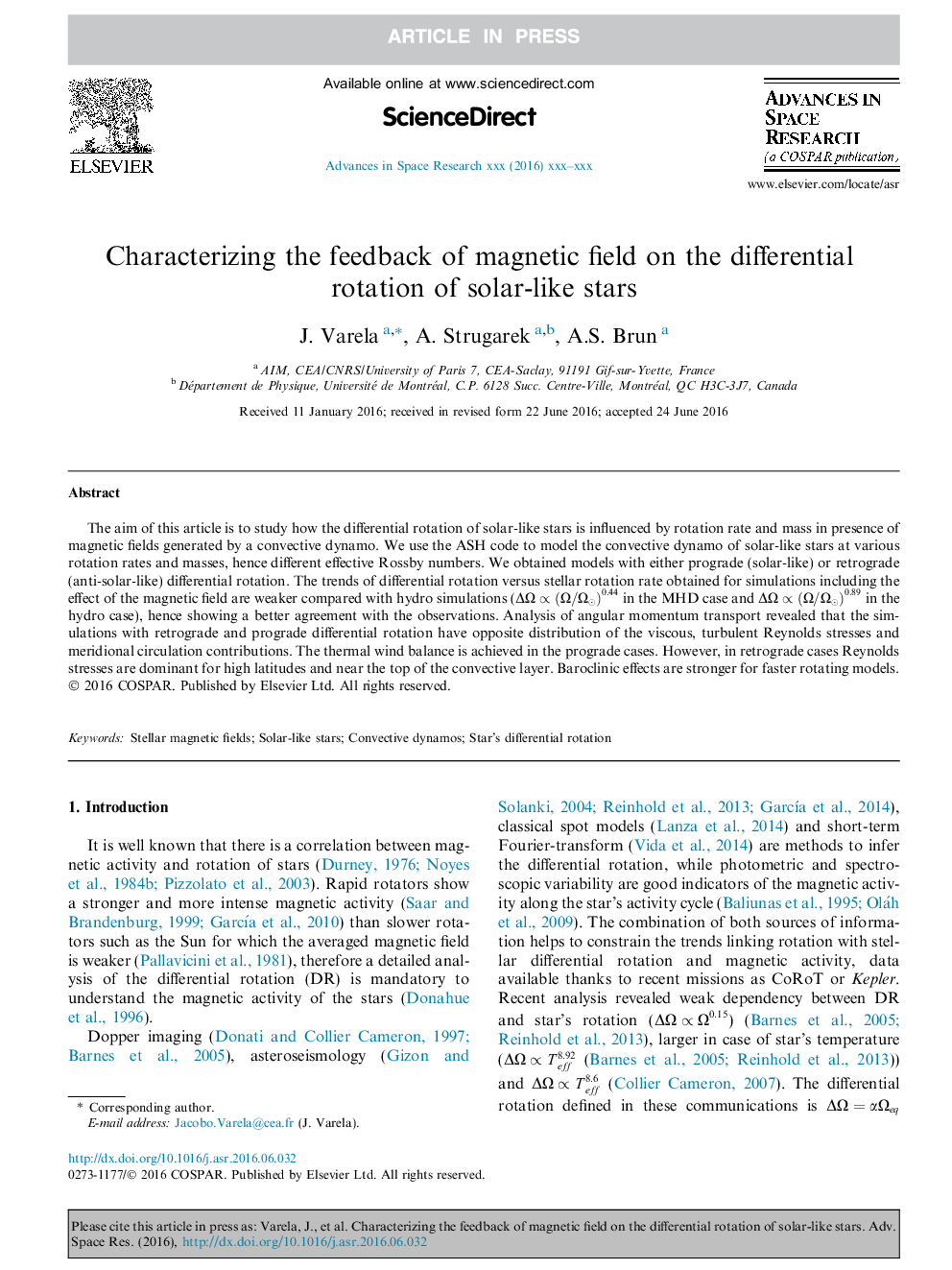| Article ID | Journal | Published Year | Pages | File Type |
|---|---|---|---|---|
| 5486585 | Advances in Space Research | 2016 | 16 Pages |
Abstract
The aim of this article is to study how the differential rotation of solar-like stars is influenced by rotation rate and mass in presence of magnetic fields generated by a convective dynamo. We use the ASH code to model the convective dynamo of solar-like stars at various rotation rates and masses, hence different effective Rossby numbers. We obtained models with either prograde (solar-like) or retrograde (anti-solar-like) differential rotation. The trends of differential rotation versus stellar rotation rate obtained for simulations including the effect of the magnetic field are weaker compared with hydro simulations (ÎΩâ(Ω/Ωâ)0.44 in the MHD case and ÎΩâ(Ω/Ωâ)0.89 in the hydro case), hence showing a better agreement with the observations. Analysis of angular momentum transport revealed that the simulations with retrograde and prograde differential rotation have opposite distribution of the viscous, turbulent Reynolds stresses and meridional circulation contributions. The thermal wind balance is achieved in the prograde cases. However, in retrograde cases Reynolds stresses are dominant for high latitudes and near the top of the convective layer. Baroclinic effects are stronger for faster rotating models.
Related Topics
Physical Sciences and Engineering
Earth and Planetary Sciences
Space and Planetary Science
Authors
J. Varela, A. Strugarek, A.S. Brun,
